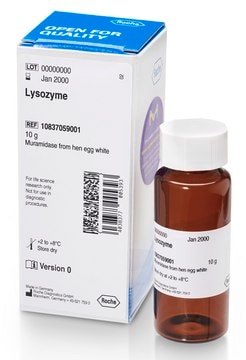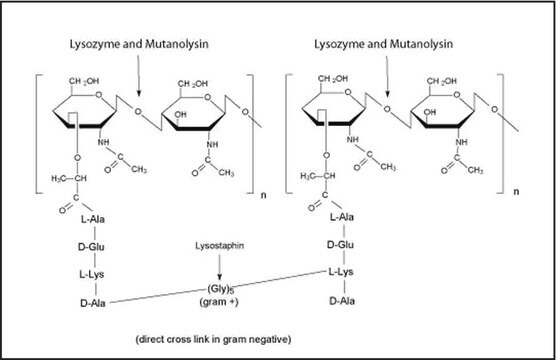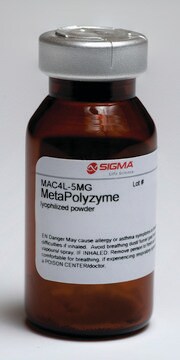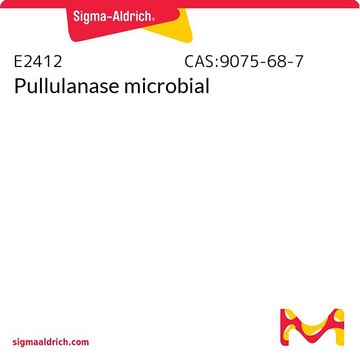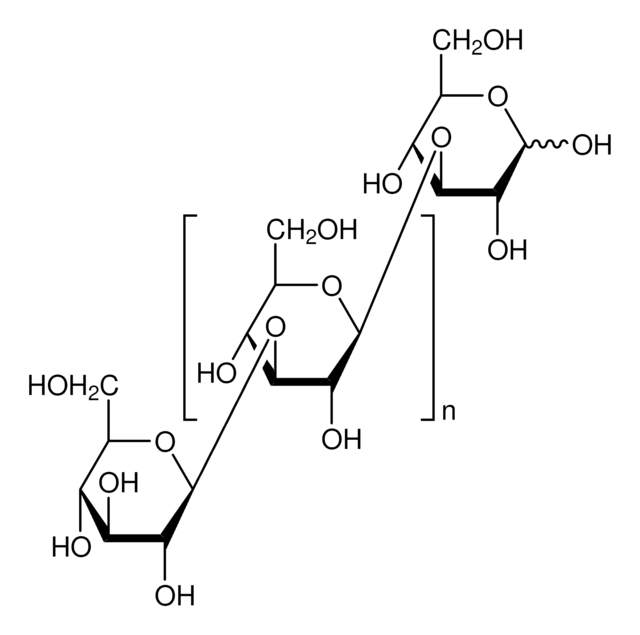L4025
Liticase
lyophilized powder, ≥200 units/mg solid
Sinônimo(s):
(1,3)-β-D-Glucan endohydrolase, 1,3-β-Glucan glucohydrolase, Bacterial lyticase, Lysing enzyme
About This Item
Produtos recomendados
fonte biológica
bacterial (Arthrobacter luteus)
Nível de qualidade
Formulário
lyophilized powder
atividade específica
≥200 units/mg solid
técnica(s)
cell based assay: suitable
adequação
suitable for cell lysis
aplicação(ões)
diagnostic assay manufacturing
temperatura de armazenamento
−20°C
Procurando produtos similares? Visita Guia de comparação de produtos
Aplicação
- as a component in spheroplasting buffer to prepare yeast nuclear extracts
- for digestion in sample preparation for β-glucan enzymatic assay using yeast
- to lyse cells for RNA isolation
Ações bioquímicas/fisiológicas
Definição da unidade
Outras notas
Palavra indicadora
Danger
Frases de perigo
Declarações de precaução
Classificações de perigo
Resp. Sens. 1
Código de classe de armazenamento
11 - Combustible Solids
Classe de risco de água (WGK)
WGK 3
Ponto de fulgor (°F)
Not applicable
Ponto de fulgor (°C)
Not applicable
Equipamento de proteção individual
Eyeshields, Gloves, type N95 (US)
Escolha uma das versões mais recentes:
Já possui este produto?
Encontre a documentação dos produtos que você adquiriu recentemente na biblioteca de documentos.
Os clientes também visualizaram
Protocolos
This procedure may be used for the determination of Lyticase activity using Baker’s yeast as the substrate.
Nossa equipe de cientistas tem experiência em todas as áreas de pesquisa, incluindo Life Sciences, ciência de materiais, síntese química, cromatografia, química analítica e muitas outras.
Entre em contato com a assistência técnica




